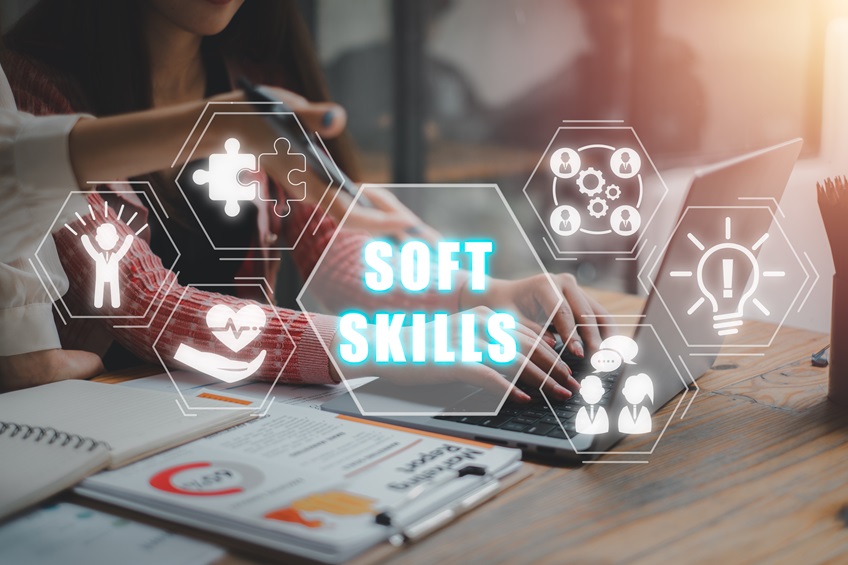Hiring the right candidate can make all the difference in your team's success. A great interview process identifies top talent and reflects your company's culture and values. Yet, many hiring managers need help with effective interviewing techniques. The good news is that mastering this art can significantly enhance your recruitment efforts.
Imagine sitting across from a candidate who ticks all the boxes on paper, but when it comes to personality and skills, something just doesn't fit. This scenario highlights why effective interviewing is crucial - it goes beyond resumes and cover letters to uncover true potential.
In this blog post, we'll explore best practices for conducting interviews that lead to successful hires while ensuring a positive candidate experience. Whether you're an experienced manager or new to the role, these strategies will equip you with the tools needed for impactful conversations during interviews. Let's dive into what makes an interview truly effective!
Preparing for the Interview
Preparing for an interview goes beyond just reviewing resumes. Start by clearly identifying the job requirements and desired skills. This clarity ensures you focus on what truly matters during the process. Next, craft targeted interview questions that align with these criteria. Consider technical abilities and behavioural aspects that can reveal a candidate's potential. Consider incorporating situational questions to gauge problem-solving capabilities. This approach provides insight into how candidates might handle real-life challenges relevant to your organisation.
Remember to familiarise yourself with the candidate's background before meeting them. Knowledge can go a long way in making the conversation more engaging and personal. Preparation sets the stage for meaningful discussions that can lead to better hiring decisions later.
Identifying job requirements and desired skills
Identifying job requirements and desired skills is a crucial first step in hiring. It sets the foundation for everything that follows. Review existing job descriptions, but feel free to rethink them. Consider what truly matters for the role today. Focus on technical and soft skills that align with your company's values. Engage with team members who understand the position's demands. They can provide insights into the essential traits, tools, and experiences needed for success. Think about future growth as well. The ideal candidate should fit current needs and adapt to your organisation's evolving challenges. Prioritise clarity in your requirements list. Clear expectations help attract candidates who truly align with your vision, reducing time spent on unsuitable applicants later on.
Crafting targeted interview questions
Crafting targeted interview questions is a crucial step in the hiring process. These questions should align closely with the job requirements and desired skills. Start by identifying key competencies needed for success in the role. Consider both technical abilities and soft skills, like communication or teamwork. This will provide a clear direction when formulating your questions. Next, focus on open-ended inquiries, encouraging candidates to share experiences rather than simple yes-or-no answers. For instance, ask them to describe a challenging project they worked on and how they handled it. Incorporate situational questions as well. Present hypothetical scenarios relevant to the position and invite candidates to explain their approach. This not only reveals problem-solving capabilities but also their thought process under pressure. Remember, effective interview questions can also uncover deeper insights into a candidate's fit within your organisation's culture and values.
Conducting the Interview
Creating a welcoming atmosphere can set the stage for a productive interview—greet candidates with warmth and genuine interest. A simple smile can help ease their nerves. As the conversation flows, prioritise active listening. Please pay attention to what candidates say and how they say it. This shows respect and encourages them to open up more. Follow-up questions are your best friend during interviews. They dig deeper into responses, revealing insights often missed in initial answers. Don't ask for examples or clarification. Be mindful of body language, both yours and theirs. It plays a crucial role in communication. Nodding thoughtfully or leaning slightly forward conveys engagement. Remember that this is as much about them assessing you as it is about you evaluating them. Ensure they feel valued throughout the process; it reflects positively on your organisation.
Creating a welcoming and comfortable environment
A welcoming environment sets the tone for a successful interview. Start by greeting candidates warmly. A smile can go a long way in easing nerves. Consider the physical space, too. Ensure it's tidy, well-lit, and free from distractions. A comfortable chair and a quiet room help candidates feel at ease. Small gestures matter as well. Offer water or coffee to create an inviting atmosphere. This simple act shows you care about their experience. Encourage open dialogue right from the start. Let them know their perspective is valued, fostering trust between both parties. Use friendly body language; lean slightly forward and maintain eye contact without being intimidating. Remember, you aim to make candidates feel relaxed enough to share their true selves during the conversation.
Active listening and asking follow-up questions
Active listening is a crucial skill for any hiring manager. It goes beyond just hearing the words; it involves thoroughly understanding the candidate's message and emotions. When you listen actively, you show respect and interest in what they say. Make eye contact and nod occasionally to encourage them while they speak. This simple gesture can create a connection that fosters open communication. Follow-up questions are your secret weapon. They dive deeper into responses, helping clarify thoughts or uncover insights that might not surface with generic queries alone. If a candidate mentions a specific project, ask about their role or the challenges faced during its execution. These techniques transform an interview from a mere Q&A session into an engaging conversation, allowing candidates to express themselves more freely and authentically. By embracing this dynamic approach, you gain richer insights into each individual's potential fit within your organisation's culture and needs.
Evaluating Candidates
Evaluating candidates is a crucial step in the hiring process. It goes beyond just assessing skills and experience. A structured approach can help you make informed decisions. Utilising a scoring system or rubric helps standardise evaluations. This method allows for comparison across all candidates, making it easier to spot top performers. Each criterion should clearly reflect the job requirements. Cultural fit is equally important. Consider how each candidate aligns with your company's values and team dynamics. Diversity brings fresh perspectives and innovation, which enhances workplace creativity. Look at soft skills as well; these often indicate how well someone will adapt to your environment. Communication, teamwork, and problem-solving abilities should be considered. Gather feedback from everyone involved in the interview process, too. Different viewpoints provide a more comprehensive picture of each candidate's potential impact on your organisation.
Utilising a scoring system or rubric
A scoring system or rubric can transform the evaluation process from subjective opinions to objective assessments. By defining specific criteria, hiring managers gain clarity on what makes a candidate suitable for a role. Each skill or characteristic can be assigned a numerical value, making comparisons easier. For instance, rate communication skills on a scale of 1 to 5 based on predetermined benchmarks. This method helps eliminate biases that may arise during discussions. Moreover, you'll find it helpful during team deliberations. A visual representation of scores provides insight into each candidate's strengths and weaknesses. It encourages constructive dialogue among team members about who best fits the position. Using this structured approach streamlines decision-making and fosters transparency in hiring practices. Candidates receive fair evaluations based solely on their performance throughout the interview process rather than personal impressions alone.
Considering cultural fit and diversity
Cultural fit and diversity are essential factors in the hiring process. They shape not just the workplace environment but also team dynamics and performance. When evaluating candidates, consider how their values align with your organisation's culture. A strong cultural fit can enhance collaboration and boost morale among team members. Additionally, embracing diversity brings fresh perspectives to problem-solving. Different backgrounds lead to innovative ideas that drive success. During interviews, explore how candidates have navigated diverse environments in their past roles. This can reveal their adaptability and openness to different viewpoints. Remember that a diverse workforce is more than a checklist; it enriches company culture while fostering inclusivity. Prioritise these qualities as you assess potential hires for long-term growth and harmony within your team.
Making the Final Decision
After gathering insights from the interview process, it's time to make a decisive choice. Collaborating with team members is key here. Each person brings a unique perspective that can shed light on different aspects of the candidates. Discuss their strengths and weaknesses openly. This dialogue fosters a well-rounded decision-making process. It also helps ensure everyone feels invested in the new hire's success. Once you've narrowed your options, consider how each candidate aligns with your company culture. A strong cultural fit often leads to better retention rates and workplace harmony. Next comes onboarding, which sets the tone for the new employee's journey. Design an engaging process that immerses them in your values and practices. A smooth transition benefits the individual and strengthens team dynamics overall.
Collaborating with team members
Collaboration is key when making hiring decisions. Involving team members in the interview process fosters diverse perspectives. Each member brings a unique viewpoint, enhancing your understanding of the candidate. Encourage open discussions about each candidate's strengths and weaknesses. This dialogue can surface insights that may not be apparent during individual evaluations. Consider creating a feedback loop where everyone shares their thoughts post-interview. Establishing this environment promotes transparency and collective ownership over the decision-making process. Moreover, ensure that all voices are heard, even those who might be quieter in meetings. Their observations could prove invaluable for assessing cultural fit or identifying potential red flags. Maintaining clear communication helps align everyone's expectations regarding the ideal candidate profile. This unity strengthens team dynamics and contributes to more informed hiring choices in the future.
Setting up a successful onboarding process
The onboarding process is a crucial step that can significantly impact how new hires acclimate to their roles. A well-structured onboarding program sets the stage for success. It should go beyond just filling out paperwork and introducing company policies. Start by giving your new employees a warm welcome. Create an agenda that includes introductions to team members, training sessions, and time for questions. Make sure they feel like part of the team from day one. Use this opportunity to provide them with the necessary resources for their role. Whether software tools or access to essential documents, ensuring they have everything at their fingertips fosters confidence.
Regular check-ins during the first few weeks help gauge their comfort level and address any concerns promptly. Encourage open communication; it helps build trust. Engage existing team members in the onboarding process as mentors or buddies for newcomers. This will not only aid integration but also strengthen interpersonal relationships within your organisation. Solicit feedback from your new hires about their experience throughout the onboarding journey. Their insights can help refine future processes, making hiring smoother each time around. Creating a successful onboarding experience reflects positively on your organisation and significantly contributes to employee satisfaction and retention.





